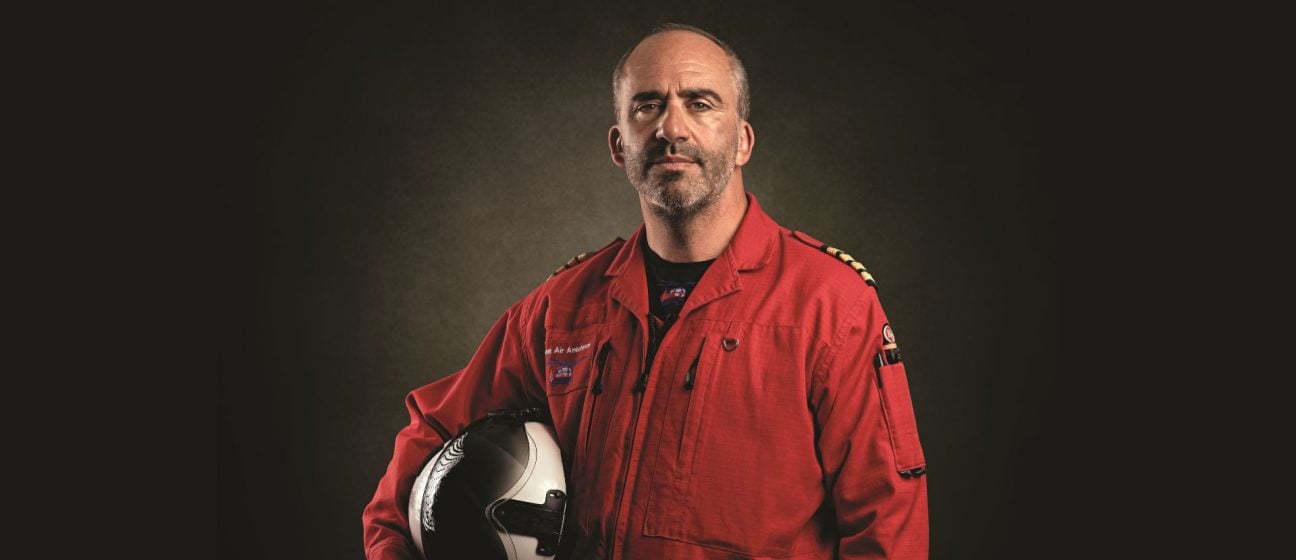
Rob is among a dozen pilots and engineers who keep our crew flying. His account highlights the challenges and responsibilities involved in emergency responding by air.
Who is Captain Rob Taylor?
Rob is one of the pilots who keep our crew flying. His account highlights the challenges and responsibilities involved in emergency responding by air.
Rob's story
‘Our medical crews bring reassurance and relief to patients no matter the outcome, or how difficult the mission might be. As pilots, we often observe the scene from a different vantage point – slightly removed from clinical care but still deeply embedded in the moment.
‘It’s not uncommon for family members, bystanders, or even other emergency services to approach us simply to say how relieved they were to see the helicopter arrive. One parent once told me, “I was so relieved when I heard the sound of the helicopter overhead.”
‘That sound carries weight, representing hope, help, and trust. We’ve even had parents with a fear of flying choose to board with their child, to stay together so we can get them both to hospital.
‘In aviation, planning and preparation are everything. While HEMS* tasks rarely allow for detailed pre-planning, we mitigate risk by anticipating a wide range of scenarios and maintaining a flexible, forward-thinking mindset. It’s not just about identifying the goal and how to reach it – it’s also about recognising potential threats and being honest about limitations. Experience and technical competence are essential, but so too are humility and openness. Acknowledging what we don’t know is just as important as knowing what we do.
‘My motivation to join the Air Ambulance was twofold: on one hand, I wanted to contribute meaningfully in moments of real need; on the other hand, I was drawn to the challenge of working dynamically, responding to demands in support of something worthwhile.
Some of our most critical decisions sit at the intersection of aviation and emergency medicine, two safety-critical domains that, when combined, amplify both complexity and risk.
‘Some landings are straightforward, requiring only standard procedures. Others – on cliffs, beaches, supermarket car parks, or in low cloud over Dartmoor for instance – demand a more nuanced, self-aware approach.
‘Each situation requires a frank assessment of risk. While urgency can never override safety, we do weigh the potential benefit to the patient. When possible, we find a “yes, but” solution. When not, we must be prepared to say “no, because.” As the sole pilot, the final decision rests with me – and my priority is always the safety of the crew… who are much better at medicine than they are at making tea.’
Devon Air Ambulance deploys two aircraft to respond to incidents across the entirety of Devon, and in support of neighbouring counties when we’re called upon to help, alongside our fleet of Critical Care Cars. Our crew can reach a range of time-critical care incidents, equipped with everything that an ICU contains, plus their expertise, which gives patients the best possible chance of a positive outcome.
*Helicopter Emergency Medical Services
Our crew is ready to respond every day of the year thanks to your support.



